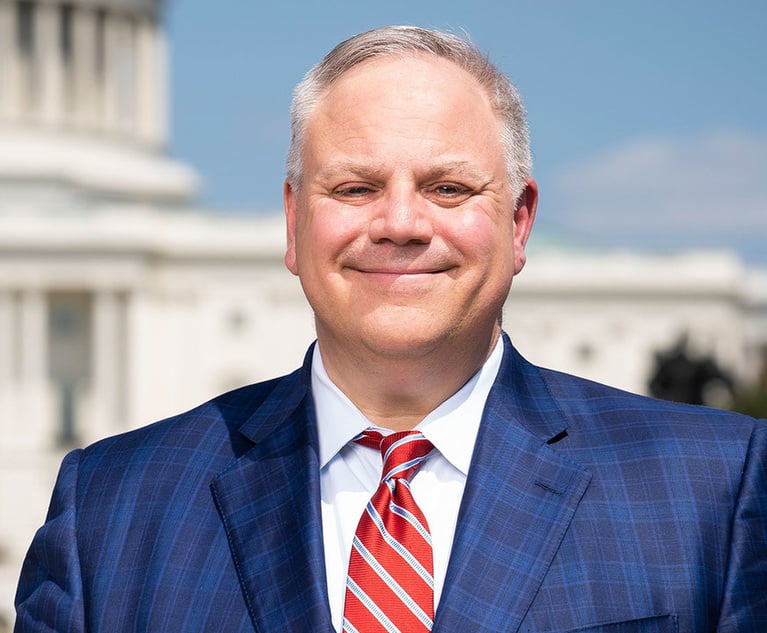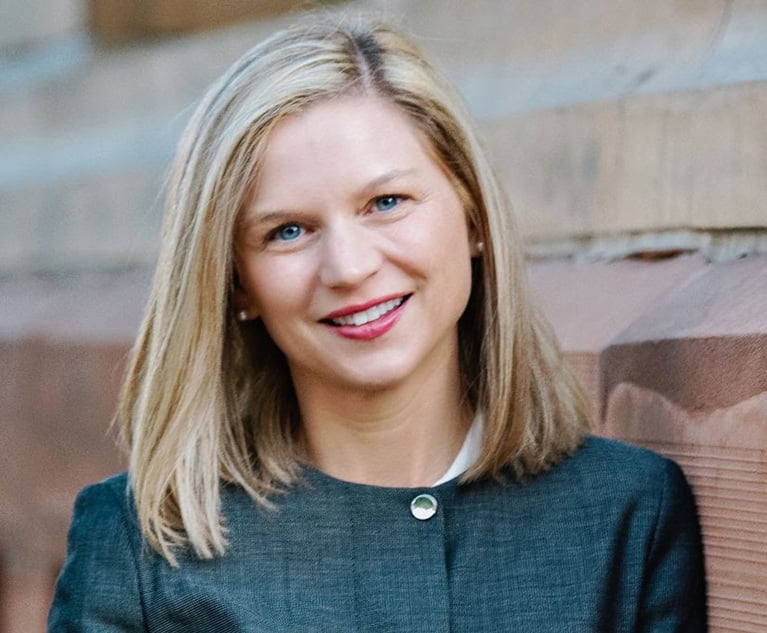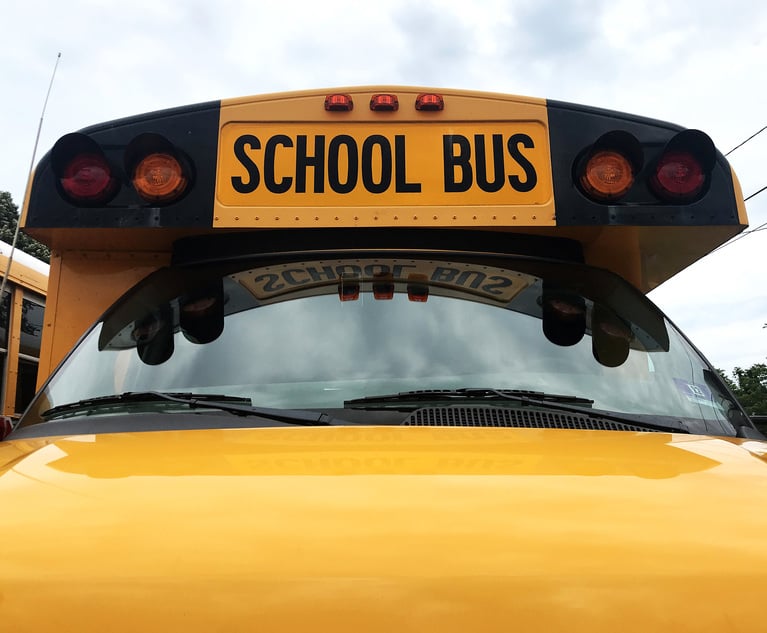Despite Status Quo in Oil States Decision, SCOTUS Shakes Up Patent Litigation
After Tuesday's ruling in SAS Institute v. Iancu, petitioners face a higher risk of getting a final written decisions finding challenged patent claims valid, leaving them estopped from fighting in district court.
April 25, 2018 at 04:25 PM
6 minute read
 US Supreme Court building. Credit: Diego M. Radzinschi / NLJ
US Supreme Court building. Credit: Diego M. Radzinschi / NLJ The U.S. Supreme Court maintained the status quo at the U.S. Patent and Trademark Office Tuesday while also shaking things up at the Patent Trial and Appeal Board in a separate companion decision that will force changes to operating procedures.
The court ruled 7-2 in Oil States v. Greene's Energy Services that the inter partes review procedure created by the 2011 America Invents Act does not encroach on Article III or the Seventh Amendment, though the court left open the possibility of a due process or takings-based challenge.
Orrick, Herrington & Sutcliffe partner Mark Davies summarized it this way: “Patents must claim real inventions. Unfortunately, many patents do not. Today, the Supreme Court rejected a challenge to a critical method that the Patent Office is using with increasing frequency to eliminate patents that should never have [been] issued in the first place.”
By a 5-4 vote the court also ruled in SAS Institute v. Iancu that if the Patent Trial and Appeal Board institutes review proceedings on any patent claim challenged in an IPR petition, it must review all of the remaining challenged claims as well.
Here's a roundup of observations in the wake of the big news.
- First and foremost, more than 100 PTAB judges and many more litigators who've built a practice around IPRs still have a job. Patent owners will likely remain convinced that the IPR process is unfair and perhaps even launch new constitutional challenges. And PTAB practitioners who are midway through IPRs where the board has instituted on some but not all claims will have to figure out how to conform with SAS. “'What's going to happen to the pending cases?' is what everyone's asking,” said Knobbe Martens partner Brent Babcock.
- U.S. Supreme Court Justice Neil Gorsuch has already found his voice on patent issues. Gorsuch penned the dissent arguing that IPRs are not constitutional, then turned around and wrote the 5-4 majority opinion in SAS explaining how they must be adjudicated going forward. Justice Clarence Thomas, author of Oil States, strengthened his already established voice on patent issues. Thomas' recent credits also include the patent venue decision TC Heartland v. Kraft and the court's most recent patent eligibility decision, Alice v. CLS Bank.
- Thomas' opinion in Oil States comes with a big caveat. At the end of his opinion, he noted, “We address only the precise constitutional challenges that Oil States raised here. Oil States does not challenge the retroactive application of inter partes review, even though that procedure was not in place when its patent issued.” His opinion “should not be misconstrued as suggesting that patents are not property for purposes of the due process clause or the takings clause.”
Villanova University Charles Widger School of Law law professor Michael Risch asked via tweet if this means patents issued before the America Invents Act are now vulnerable to a takings-based challenge. “That's my view of how this case should have been argued all along,” he commented.
“The Supreme Court did not shut the door entirely on constitutional challenges to the AIA,” said Knobbe Marten's Babcock. “It would take a pretty bold patent owner to take another challenge all the way up, and it would certainly be an uphill battle. But, you know, never say never.”
Ropes & Gray counsel Matt Rizzolo seemed to see it the same way. Owners of pre-AIA patents could reasonably argue that if they'd known about IPRs, they might have elected to protect their inventions via trade secrets, for example. But, he said, petitioners could counter that before the AIA, patent owners faced the same risks via re-examination.
'SAS' Takes Center Stage
In SAS, the high court ruled that Section 318(a) of the America Invents Act said that when the PTAB institutes IPR proceedings, the board “shall issue a final written decision with respect to the patentability of any patent claim challenged by the petitioner.” The PTO had interpreted that as allowing the board to pick and choose a handful of the weakest claims from a petition that might challenge 20, 30 or more. It will no longer have that option.
Latham & Watkins partner Bob Steinberg said this will raise “all kinds of strategic questions” for petitioners. Petitioners will have to be more careful about which claims they challenge. In the past, if the PTAB didn't institute proceedings on a claim, it was no-harm-no-foul.
Now petitioners will face a higher risk of final written decisions finding challenged claims valid, leaving petitioners estopped from fighting them in district court. “The PTAB is going to be the place where patentability challenges get decided,” Steinberg said.
SAS counsel Greg Castanias said some accused infringers might opt for district court. But “the claims are likely to be litigated in a single stop, rather than in a piecemeal fashion” across the two jurisdictions, said the Jones Day partner.
In the meantime, there's the issue of pending cases. Babcock estimates there are hundreds of partial institution cases wending their way through the PTAB. He thinks one option might be starting over while extending the proceedings by six months, which the board can do for good cause. He also suggested the board could find claims that weren't worthy of institution are patentable.
Former PTO director Michelle Lee suggested one other possibility: Petitioners could perhaps file new petitions on the un-instituted claims and try to get them joined with the ongoing proceedings, depending on what stage the PTAB litigation is in.
A PTO spokesman said the agency is “carefully considering” both Supreme Court decisions and determining their impact.
Weil, Gotshal & Manges partner Ed Reines pointed out that the PTAB also tends to pick and choose among petitioners' prior art references. The Supreme Court didn't expressly rule on this, but Gorsuch's opinion seemed to imply some skepticism. Gorsuch observed that the ex parte re-examination statute lets the PTAB review patents both claim-by-claim and ground-by-ground, while adding that “Congress didn't choose to pursue that known and readily available approach here.”
Ropes & Gray's Rizzolo noted that Gorsuch drew frequent parallels between IPRs and district court proceedings, saying IPR “mimics civil litigation” and “looks a good deal more like civil litigation.”
That sounded to Rizzolo like the Supreme Court's rationale for applying Native American tribal immunity to proceedings before the Federal Maritime Commission in a 2002 opinion. He expects Allergan Inc. and the Saint Regis Mohawk Tribe to make the same argument about the PTAB.
Finally, winning attorney Castanias relayed a moment of grace and civility. Shortly after the Supreme Court issued the SAS decision, Castanias said, he received a brief email from his opponent, Assistant Solicitor General Jonathan Bond, congratulating him on the win. That, said Castanias, made a good day even better.
This content has been archived. It is available through our partners, LexisNexis® and Bloomberg Law.
To view this content, please continue to their sites.
Not a Lexis Subscriber?
Subscribe Now
Not a Bloomberg Law Subscriber?
Subscribe Now
NOT FOR REPRINT
© 2025 ALM Global, LLC, All Rights Reserved. Request academic re-use from www.copyright.com. All other uses, submit a request to [email protected]. For more information visit Asset & Logo Licensing.
You Might Like
View All
Brownstein Adds Former Interior Secretary, Offering 'Strategic Counsel' During New Trump Term
2 minute read
Weil, Loading Up on More Regulatory Talent, Adds SEC Asset Management Co-Chief
3 minute read
FTC Sues PepsiCo for Alleged Price Break to Big-Box Retailer, Incurs Holyoak's Wrath
5 minute read
Supreme Court Will Hear Religious Parents' Bid to Opt Out of LGBTQ-Themed School Books
Trending Stories
- 1Silk Road Founder Ross Ulbricht Has New York Sentence Commuted by Trump
- 2Settlement Allows Spouses of U.S. Citizens to Reopen Removal Proceedings
- 3CFPB Resolves Flurry of Enforcement Actions in Biden's Final Week
- 4Judge Orders SoCal Edison to Preserve Evidence Relating to Los Angeles Wildfires
- 5Legal Community Luminaries Honored at New York State Bar Association’s Annual Meeting
Who Got The Work
J. Brugh Lower of Gibbons has entered an appearance for industrial equipment supplier Devco Corporation in a pending trademark infringement lawsuit. The suit, accusing the defendant of selling knock-off Graco products, was filed Dec. 18 in New Jersey District Court by Rivkin Radler on behalf of Graco Inc. and Graco Minnesota. The case, assigned to U.S. District Judge Zahid N. Quraishi, is 3:24-cv-11294, Graco Inc. et al v. Devco Corporation.
Who Got The Work
Rebecca Maller-Stein and Kent A. Yalowitz of Arnold & Porter Kaye Scholer have entered their appearances for Hanaco Venture Capital and its executives, Lior Prosor and David Frankel, in a pending securities lawsuit. The action, filed on Dec. 24 in New York Southern District Court by Zell, Aron & Co. on behalf of Goldeneye Advisors, accuses the defendants of negligently and fraudulently managing the plaintiff's $1 million investment. The case, assigned to U.S. District Judge Vernon S. Broderick, is 1:24-cv-09918, Goldeneye Advisors, LLC v. Hanaco Venture Capital, Ltd. et al.
Who Got The Work
Attorneys from A&O Shearman has stepped in as defense counsel for Toronto-Dominion Bank and other defendants in a pending securities class action. The suit, filed Dec. 11 in New York Southern District Court by Bleichmar Fonti & Auld, accuses the defendants of concealing the bank's 'pervasive' deficiencies in regards to its compliance with the Bank Secrecy Act and the quality of its anti-money laundering controls. The case, assigned to U.S. District Judge Arun Subramanian, is 1:24-cv-09445, Gonzalez v. The Toronto-Dominion Bank et al.
Who Got The Work
Crown Castle International, a Pennsylvania company providing shared communications infrastructure, has turned to Luke D. Wolf of Gordon Rees Scully Mansukhani to fend off a pending breach-of-contract lawsuit. The court action, filed Nov. 25 in Michigan Eastern District Court by Hooper Hathaway PC on behalf of The Town Residences LLC, accuses Crown Castle of failing to transfer approximately $30,000 in utility payments from T-Mobile in breach of a roof-top lease and assignment agreement. The case, assigned to U.S. District Judge Susan K. Declercq, is 2:24-cv-13131, The Town Residences LLC v. T-Mobile US, Inc. et al.
Who Got The Work
Wilfred P. Coronato and Daniel M. Schwartz of McCarter & English have stepped in as defense counsel to Electrolux Home Products Inc. in a pending product liability lawsuit. The court action, filed Nov. 26 in New York Eastern District Court by Poulos Lopiccolo PC and Nagel Rice LLP on behalf of David Stern, alleges that the defendant's refrigerators’ drawers and shelving repeatedly break and fall apart within months after purchase. The case, assigned to U.S. District Judge Joan M. Azrack, is 2:24-cv-08204, Stern v. Electrolux Home Products, Inc.
Featured Firms
Law Offices of Gary Martin Hays & Associates, P.C.
(470) 294-1674
Law Offices of Mark E. Salomone
(857) 444-6468
Smith & Hassler
(713) 739-1250










